
Daniel Saks
Chief Executive Officer
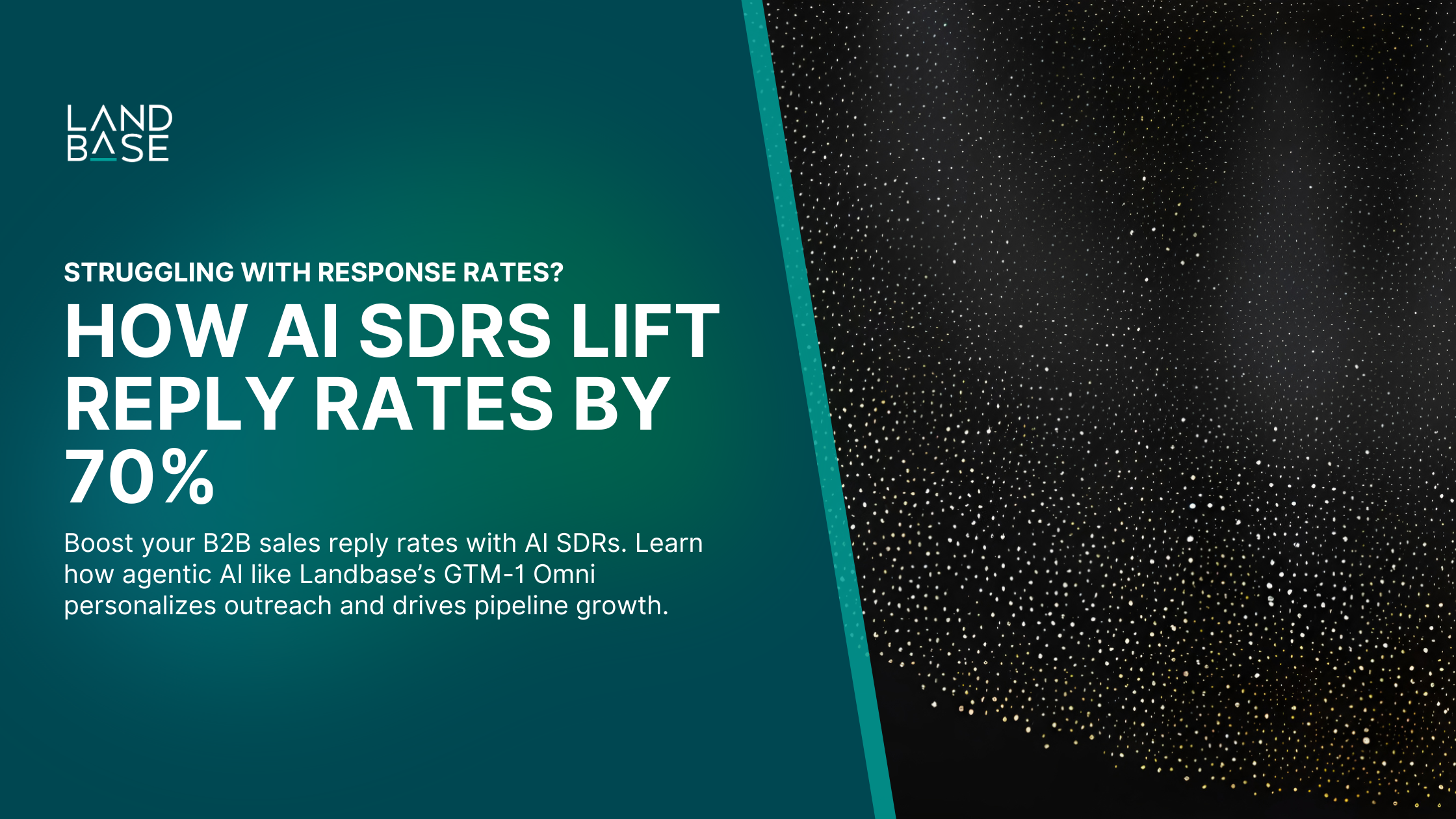
Every sales email you send feels like a shot in the dark. You craft the perfect message, hit send to dozens or even hundreds of prospects – and then crickets. If you’re struggling with low response rates, you’re not alone. In B2B sales development, getting prospects to reply has become increasingly difficult, leaving many teams scrambling for new solutions. Enter the AI SDR (AI Sales Development Representative): a game-changing innovation that promises to boost reply rates (in some cases by as much as 70%) and breathe new life into your outbound strategy. This blog follows a problem-solution format – first unpacking why traditional outreach is faltering, then exploring how AI SDRs, especially agentic AI systems like Landbase’s GTM-1 Omni, tackle those pain points. By the end, you’ll see why adopting an AI SDR might be the key to lifting your reply rates and supercharging your go-to-market strategy.
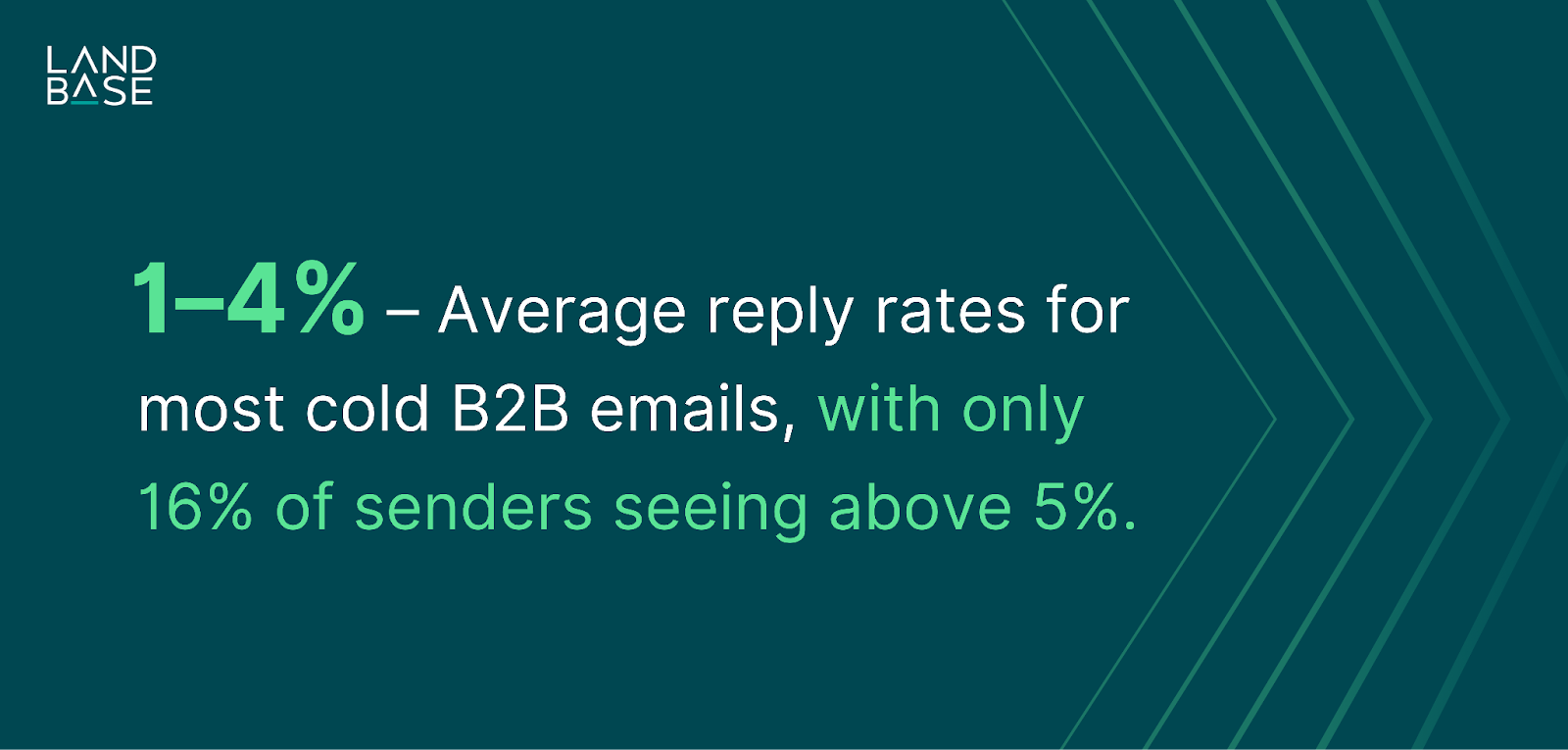
Picture this: your sales team sends out a huge batch of cold emails, but only a handful of prospects ever respond. Unfortunately, this scenario is the norm rather than the exception. In fact, most cold B2B emails see only about 1–4%reply rates on average(1). In one industry survey, 84% of outbound sales emails generated no meaningful response at all. With such bleak averages, it’s no surprise sales and marketing professionals feel frustrated. Why are response rates so low?
There are several culprits. First, buyers are inundated with generic “spray and pray” outreach. Busy decision-makers might receive dozens of sales pitches a day, and anything that looks like a mass email goes straight to the trash. If your message doesn’t immediately stand out as personalized and relevant, it’s likely to be ignored. Second, many sales reps give up too early. Studies show 70% of reps send only one email to a prospect and never follow up(2). Yet most deals require persistent effort – around 80% of sales need five or more follow-ups to close(2). By quitting after one touch, reps leave a lot of potential replies (and revenue) on the table. Third, the challenges of modern email deliverability and AI-related fatigue are real. Nearly 69% of outbound senders report their performance has declined year-over-year due to spam filters and prospects tuning out templated, impersonal messaging(1). In short, traditional outreach struggles because it’s often too generic, too sporadic, and too slow to break through to today’s buyers.
The impact of low reply rates goes beyond bruised egos – it threatens your pipeline. Fewer replies mean fewer conversations and fewer opportunities for your sales team. It’s a vicious cycle: as response rates drop, reps become discouraged and spend even less time on prospecting, further worsening the problem. If you’re experiencing this, take heart: the rise of AI SDRs offers a way to flip the script. These AI-powered “digital reps” are engineered to solve the very issues plaguing traditional outreach. Before we dive into the solutions, remember that you’re not alone in facing this challenge. The majority of B2B teams are in the same boat, with only 16% of cold email senders ever seeing reply rates above 5%(1). The good news is that means there’s plenty of room for improvement – and AI SDRs are proving to be a powerful lever to finally lift those stubborn reply rates.
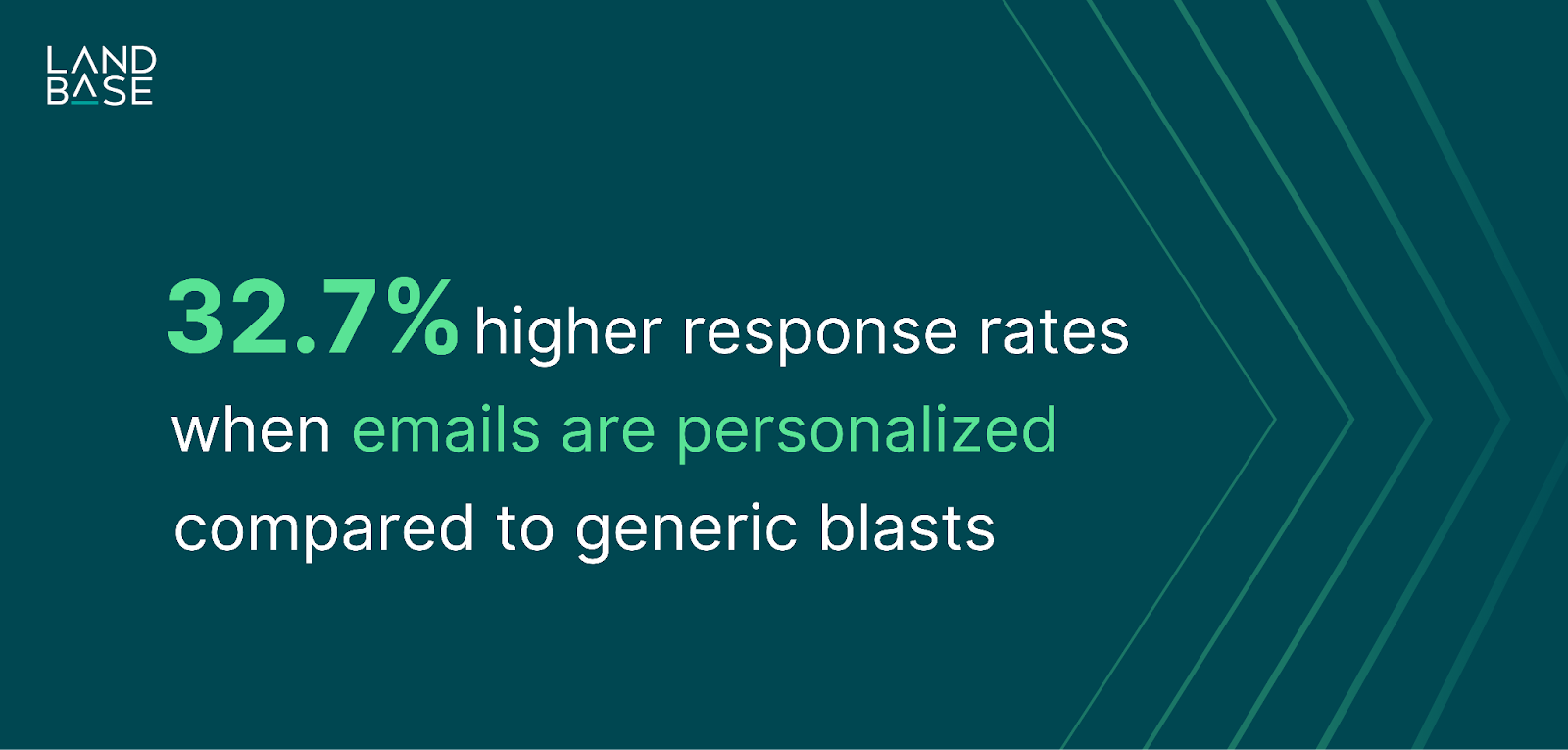
One of the biggest reasons prospects ignore sales emails is lack of personalization. Think about it – would you respond to a cookie-cutter email that clearly went out to 100 other people? Probably not. Personalization has long been known as the key to higher engagement, but doing it at scale has been nearly impossible for human teams. A human SDR might personalize emails to their top 5 or 10 accounts, but they simply don’t have the time to tailor every message when they’re contacting hundreds of leads. This is where an AI SDR shines by delivering true one-to-one personalization at machine speed.
AI SDR platforms can analyze vast amounts of data on each prospect – from their industry, role, and company size to recent news mentions or even subtle cues like what content they’ve engaged with online. Using this intel, the AI crafts outreach that feels hand-written for each recipient. It might reference a prospect’s specific pain point or mention a competitor’s product they use, all within the opening lines of an email. The result is emails that make prospects think, “Hey, this person did their homework on me,” increasing the likelihood of a reply. According to industry studies, personalized email content can increase response rates by over 30% on average(4). In practice, sales teams have found that tailoring their messages (even slightly) can make a dramatic difference – one report noted that fully personalized emails received 32.7% higher response rates than generic blasts(4). That’s the difference between 30 replies vs. 20 replies out of 100, just by personalizing the approach.
Crucially, AI SDRs enable personalization at scale. They don’t get tired or pressed for time. A well-trained AI SDR (like Landbase’s GTM-1 Omni) can generate hundreds of individualized emails in the time it takes a human rep to manually write one. And these aren’t bland mail-merge scripts inserting only a name and company – they’re context-rich messages that might reference a prospect’s recent funding announcement or a trend in their niche market. For example, Landbase’s AI has been fine-tuned on tens of millions of high-performing sales emails to learn what gets replies. It “knows” how to adjust tone and value propositions when emailing, say, a fintech CFO versus a healthcare CIO, because it has seen what works for each persona. It even runs automatic A/B tests, trying different subject lines or email formats and learning from the results. All of this happens behind the scenes, without you lifting a finger.
For a human team, executing this level of personalization across thousands of contacts would be unthinkable. But for an AI SDR, it’s just Tuesday. By leveraging AI for your outreach, you essentially get the best of both worlds: the empathetic, targeted messaging of a personal touch, and the volume and speed of automation. The end result is more prospects engaged in genuine conversations. As one sales leader put it, “More personalization = more engagement”(3) – and AI is the enabler that finally makes personalization feasible for every single prospect. If generic emails and templated pitches are dragging your reply rates down, an AI SDR can flip the equation by sending precisely the right message to the right person at the right time, thousands of times over. Don’t be surprised when those previously silent prospects suddenly start replying to your emails that truly speak to them.
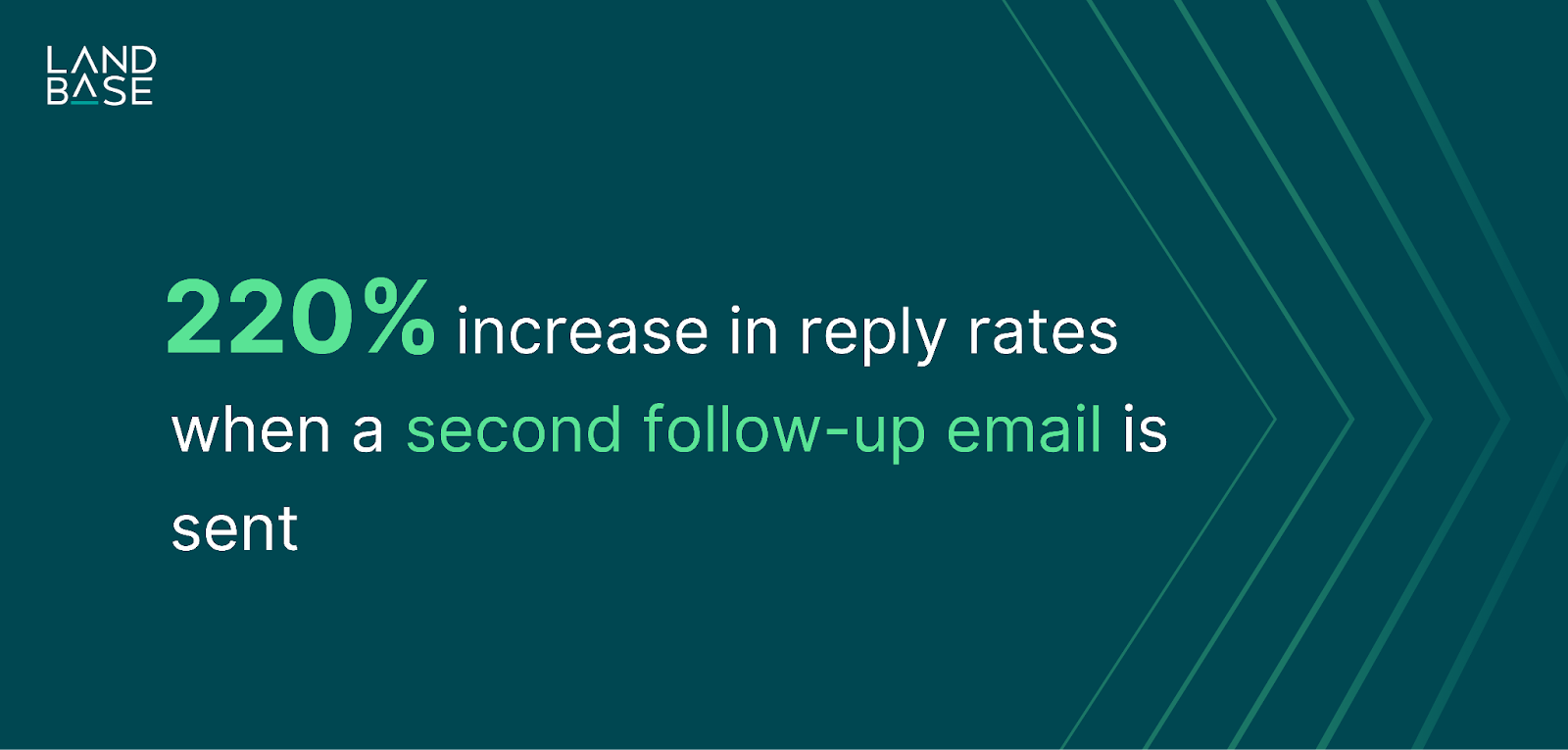
Another major reason reply rates suffer is that humans are, well, human. We have limited time, we need sleep, and we can’t monitor our inboxes 24/7. An AI SDR, on the other hand, never takes a day off. It will politely ping your prospects at 2:00 AM if that’s when they’re online, follow up again at 2:00 PM if they haven’t replied, and instantly engage anyone who raises their hand with interest – all without coffee breaks or burnout. This always-on persistence and speed is a game-changer for lifting response rates.
Think about follow-ups first. As mentioned earlier, most reps don’t follow up enough, even though persistence is often what separates a closed deal from a lost opportunity. Here, AI SDRs excel by automating the follow-up process end-to-end. They will consistently execute multi-touch sequences – email #2, #3, #4, LinkedIn message, phone call, and so on – until a prospect replies or the sequence runs its course. The AI never “forgets” to follow up or gets discouraged by silence. It will keep gently nudging prospects with value-add messages and different angles. This level of systematic follow-up can have a huge impact. In fact, one study found that sending a second follow-up email can result in a 220% increase in reply rate compared to just the initial email(2). AI SDRs make sure you reap those benefits by always sending that second, third, and fourth email (in a thoughtful way). With an AI SDR, every lead in your funnel is nurtured thoroughly – no more letting warm opportunities slip because someone forgot to send a follow-up.
Now consider speed of response, especially for inbound inquiries or any sign of interest. We’ve all heard that striking while the iron is hot is critical in sales. Yet in many organizations, a web demo request might sit for hours (or days) before a rep replies, especially outside of business hours. Here, AI SDRs provide an unbeatable advantage: they can respond to a prospect within seconds of an incoming inquiry or engagement. Case in point – a recent benchmark found AI SDRs achieve sub-minute response times, whereas human sales teams take 42 hours on average to respond to new leads(7). That gap is staggering. No human team, no matter how dedicated, can match an AI’s speed in acknowledging and following up with prospects. And speed matters: around 50% of buyers choose the vendor that responds first to them(2). If your AI SDR is first to greet a prospect while competitors are still asleep or stuck in meetings, you’ve immediately gained an edge in the conversation. The prospect feels attended to and impressed by your responsiveness.
AI SDRs also excel at the micro-level of timing – sending emails at the optimal hour for each contact, promptly replying to any questions, and even re-engaging old leads when new triggers arise (for example, if a prospect clicks a link in your email but doesn’t reply, the AI can recognize this interest and send a follow-up tailored to that content). This real-time agility keeps more conversations alive. In short, AI SDRs maximize every opportunity by being omnipresent and ultra-responsive. They ensure no prospect falls through the cracks due to human delay or forgetfulness. Your outreach essentially gains a tireless assistant that’s always working on your behalf: if a prospect is ready to talk, the AI SDR will be right there to spark the conversation. And that translates into more replies and ultimately more meetings booked.
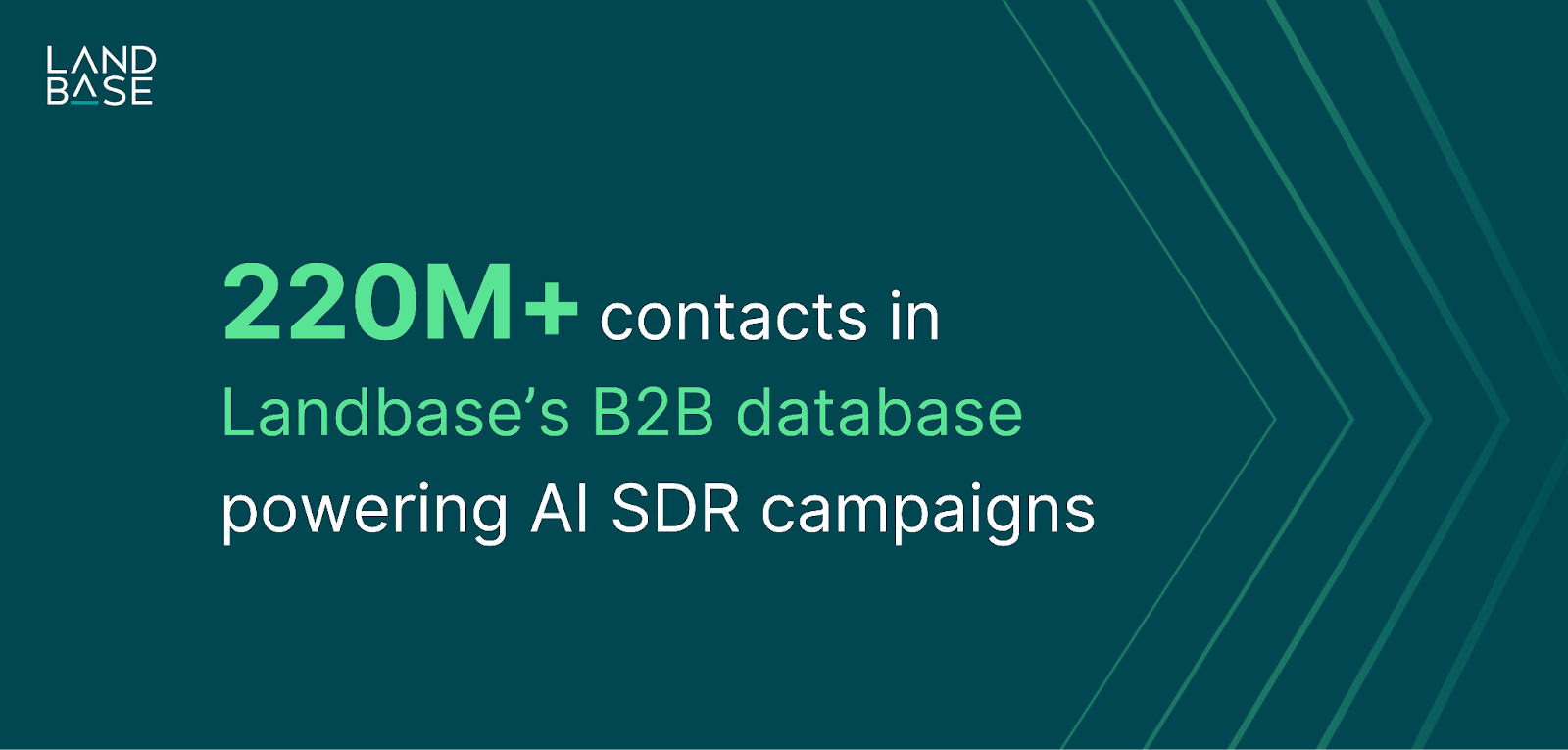
We’ve talked about personalization and persistence – now let’s discuss reach. Traditional SDRs are often limited in how many channels they can juggle effectively. One rep might focus on emails, another on cold calls or LinkedIn messages. But today’s buyers are scattered across email, social media, phone, SMS, and more. Reaching them requires a coordinated, multi-channel approach. This is another area where AI SDRs have the upper hand: they can orchestrate complex outreach sequences across all channels simultaneously, powered by data-driven targeting that zeroes in on the best prospects. In essence, an AI SDR acts like a whole team of specialists coordinating your campaign – email marketer, LinkedIn social seller, phone dialer – all unified under one AI “brain” working in concert.
Consider Landbase’s agentic AI platform as an example. It deploys multiple specialized AI agents that mimic key go-to-market roles. One agent might handle prospect research and list building, another writes tailored email copy, another manages LinkedIn outreach, and yet another ensures technical steps like sending domain warm-up and compliance checks are done. These AI agents work together 24/7, sharing what they learn, to execute a cohesive multi-channel campaign. On Monday, your prospect might receive a personalized email; on Tuesday, they see a LinkedIn connection request referencing that email; by Wednesday, if there’s still no reply, the AI places a polite, automated voicemail or SMS. Everything is coordinated for maximum effect and “always on” follow-up. For the prospect, it feels like your company is everywhere – email inbox, LinkedIn feed, phone – with consistent messaging tailored to them. For your team, all of this happens automatically. The AI SDR essentially covers every base so you don’t have to rely on a single channel to get a reply.
Crucially, this multi-channel outreach is guided by data. A human rep guessing which prospects to call or which ones might respond on LinkedIn is operating on hunches or limited research. In contrast, AI SDRs leverage big data and AI analytics to target the right people at the right time. For instance, the Landbase platform taps into a massive B2B database of over 220 million contacts (and 24 million companies), enriched with more than 10 million real-time intent signals indicating which prospects are “in market” or showing buying intent. These signals might include a company’s recent hiring spree (which could mean they need new software), a leadership change, a funding round, or even tech stack information that suggests a pain point your solution solves. The AI crunches all this data to prioritize high-potential targets and decide the optimal time and channel to reach out. Maybe Prospect A tends to open emails but never answers calls – the AI will focus on email for them. Prospect B, a busy CTO, might ignore cold emails but responds to a LinkedIn message that references a blog he wrote – the AI will go that route. In industries like telecom, Landbase’s AI even watches for triggers like a multi-location business expanding (which might indicate need for new telecom services) and then engages them with a timely pitch exactly at that moment. This level of precision targeting is nearly impossible to do manually, but AI SDRs do it at scale with ease, constantly adjusting who they contact and how, based on what the data shows is working.
The payoff from multi-channel, data-driven outreach is higher engagement across the board. Prospects are more likely to respond when you reach them on their preferred channel with a message calibrated to their current needs or interests. Maybe that CFO ignored your first email, but she clicks the LinkedIn message that came a day later – now the AI knows to prioritize LinkedIn for her going forward. By casting a wider net (in a smart, integrated way), AI SDRs amplify your chances of catching a prospect’s attention somewhere. Companies using these AI “dream teams” of multi-agent SDRs report significant gains: some have seen up to 7x higher conversion rates and dramatically faster time-to-pipeline by letting the AI optimize every touchpoint(4). The takeaway is clear – if you’re only relying on one channel or static lists, you’re missing opportunities. An AI SDR brings a data-fueled, omnichannel approach that ensures when a prospect is ready to engage, your message is right there in front of them on the channel they’re most likely to pay attention to.
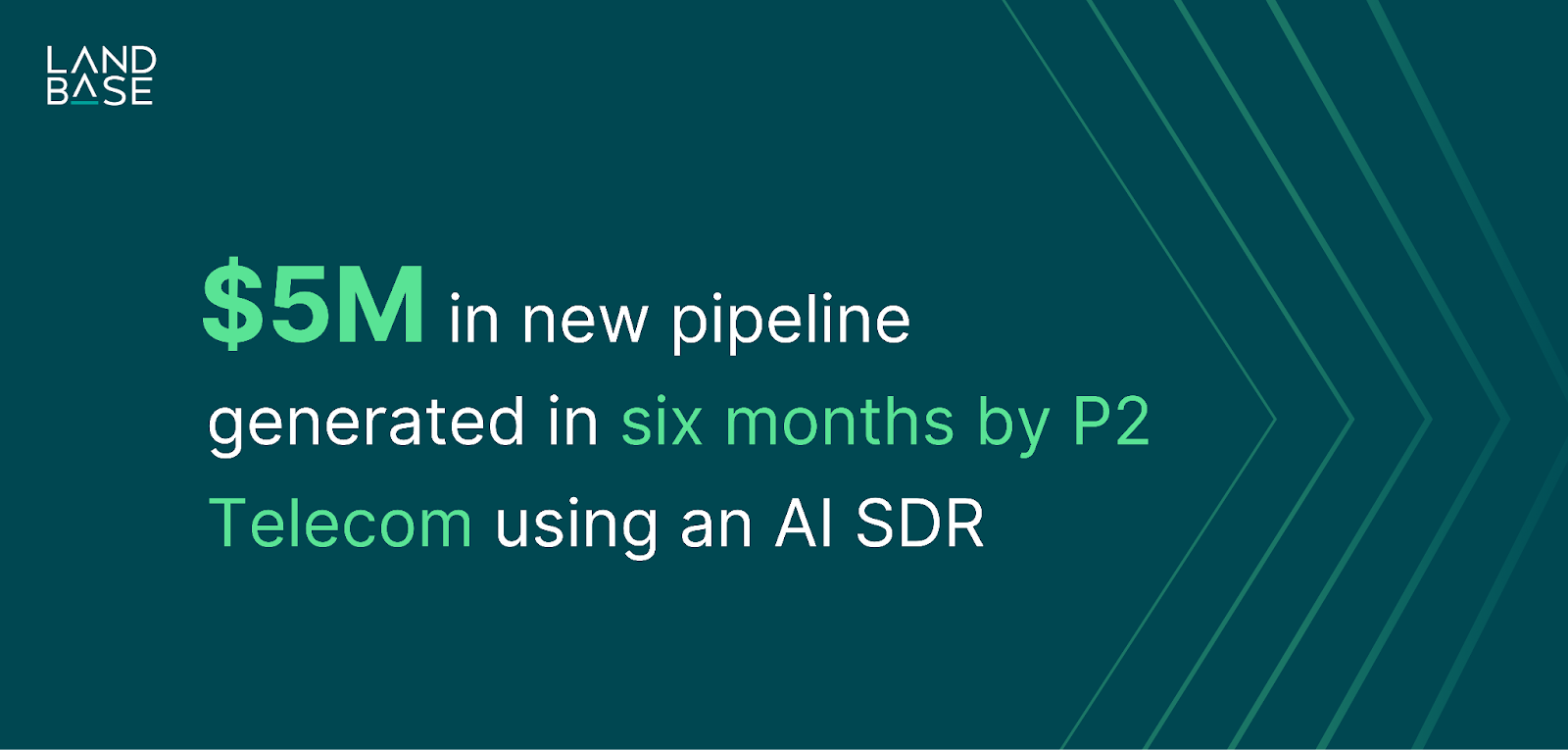
All the theory in the world means little without results. So, how do AI SDRs perform in practice? The answer, in short: remarkably well. Early adopters across various industries – from tech startups to telecom providers – have reported eye-popping improvements in engagement and pipeline metrics after deploying AI SDR solutions. To make this concrete, let’s look at a few real-world examples and stats that underscore just how much AI SDRs can move the needle on reply rates and sales outcomes.
One telling example comes from P2 Telecom, a nationwide telecom provider that struggled for years with traditional outbound marketing. With a small team and no dedicated sales ops or marketing staff, the company’s outreach efforts were inconsistent and yielded poor results. After implementing Landbase’s AI SDR platform, P2 Telecom’s founder Bill Patchett described the change as transformational. “We’ve had big wins, and it’s turned us into an outreach company where we’ve had zero success in the past,” Patchett said(6). The numbers back it up: in just six months, P2’s AI SDR campaigns effortlessly generated over 200 sales-qualified leads – worth an estimated $5 million in new pipeline(5). This surge in leads was so overwhelming that P2’s account executives actually had to adjust to handling the influx! Patchett noted that before, they mostly relied on referrals and networking, but with the AI SDR (“the best networking tool I’ve ever been involved in,” he called it(6)), they could proactively reach thousands of potential customers they’d never tapped before. The AI took on the heavy lifting of prospecting and personalized outreach, freeing the human team to jump into conversations already warmed up by the AI. The result: a once quiet sales pipeline was bursting with opportunities.
P2 Telecom’s story isn’t a one-off. Across Landbase’s client base and other AI SDR adopters, similar stories are emerging. Early clients have seen 5–7x higher reply rates and pipeline generation after switching to AI-driven outreach. In fact, one tech company saw its email reply rate improve so dramatically that the sales team paused campaigns to catch up with the influx of interested responses. In another case, a telecom provider’s AI-sourced campaign added $400K in new monthly recurring revenue during what used to be a slow season, far outperforming their previous efforts. And it’s not just tech and telecom – professional services and B2B service firms are seeing benefits too. For example, an IT services company used an AI SDR to consistently fill its pipeline by automatically finding companies showing signs they needed outsourced IT support. A software firm expanded into three new vertical markets within a year by leveraging AI SDR campaigns to quickly identify and engage new buyer segments. These are the kinds of results that make sales leaders sit up and take notice.
It’s worth emphasizing that these gains aren’t about “magic subject lines” or spam blasts – they’re the outcome of the specific strengths we discussed earlier: hyper-personalization, relentless follow-up, multi-channel presence, and data-driven targeting, all executed by tireless AI. When you implement an AI SDR, you essentially deploy an always-on sales team that can scale outreach in a way humans simply can’t. And the outcome is more replies in your inbox and more deals in your pipeline. Many organizations report that reply rates which used to languish in low single digits suddenly jump to high single digits or even double digits once the AI SDR is in action. For instance, Mailshake (a popular sales engagement platform) notes that only 16% of senders ever broke a 5% reply rate before, but with AI assistance that barrier is now being routinely surpassed(1). It’s not uncommon to hear of campaigns hitting 10–15% reply rates or higher when powered by well-tuned AI SDR messaging(8) – outcomes that would be considered home runs in the past.
The bottom line from these stories is that AI SDRs are delivering tangible, often extraordinary improvements in sales outreach effectiveness. Teams struggling with meager response rates have turned things around to the point of having “good problems” – like too many leads to handle or needing to expand their sales staff to capitalize on newfound pipeline. If a 70% lift in reply rates sounds optimistic, these real cases show it’s quite attainable, and in some instances even conservative. And beyond the reply metric, the ultimate win is pipeline and revenue. More conversations lead to more meetings, which lead to more deals. As P2 Telecom experienced, an AI SDR can uncover millions in revenue potential that was previously untapped. So when we talk about lifting reply rates by 70%, it isn’t just about vanity metrics – it’s about setting in motion a cascade of positive outcomes for your sales organization. It starts with a reply, but it can end with a closed deal and a new lifelong customer.
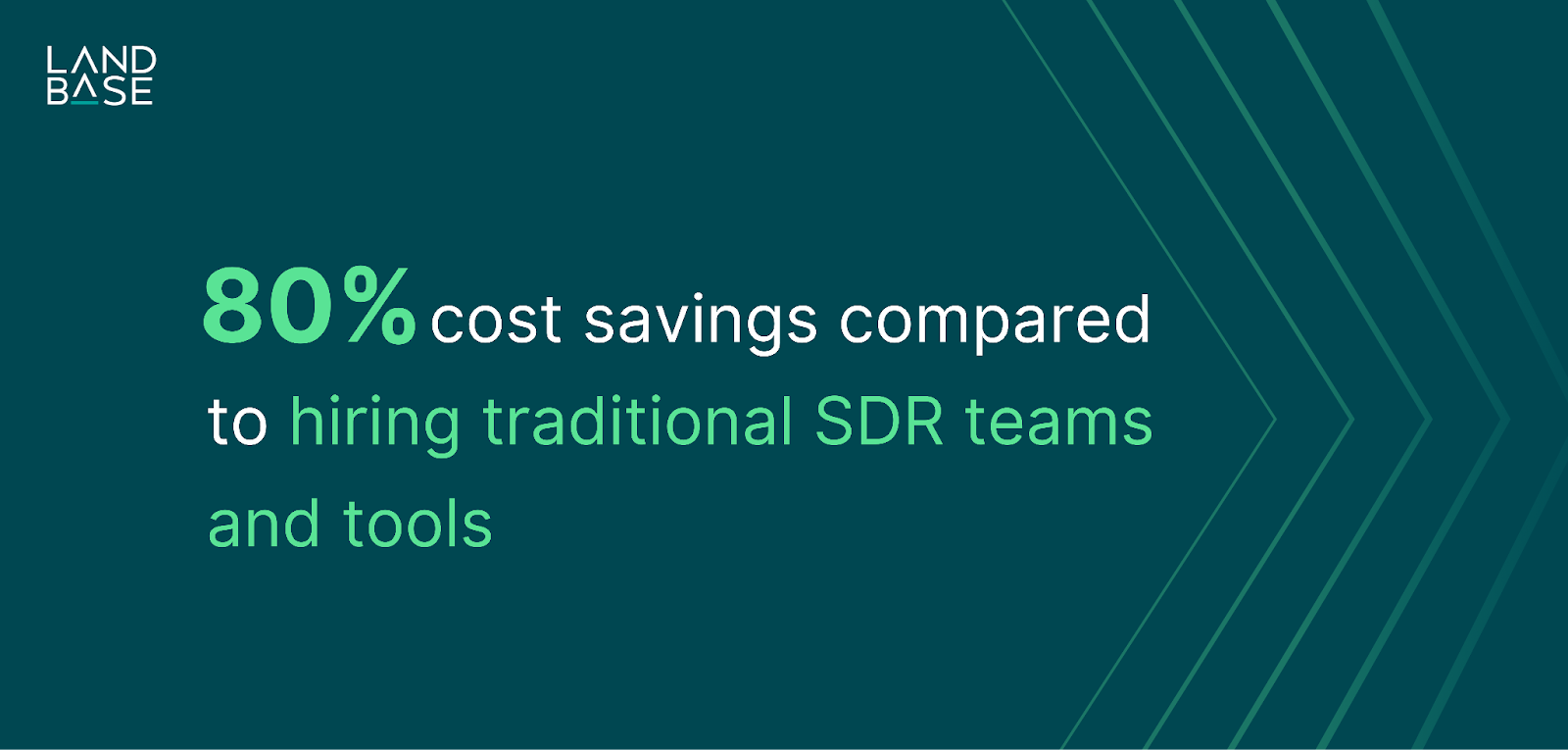
It’s clear by now that AI SDRs offer a powerful antidote to the low response rates plaguing B2B sales. The question isn’t if this technology can help – it’s how to best integrate it into your go-to-market (GTM) strategy. This is where agentic AI platforms like Landbase’s GTM-1 Omni enter the picture. Landbase positions itself as the “leader in agentic AI for go-to-market”, and its flagship platform (powered by the GTM-1 Omni model) essentially acts as an AI SDR team for your business. If you’re aiming to evolve your GTM approach and drastically improve outreach performance, understanding what solutions like GTM-1 Omni offer is a great place to start.
So, what is GTM-1 Omni? In simple terms, it’s a domain-specific multi-agent AI built specifically for sales and marketing workflows. Unlike a single chatbot or a generic AI assistant, GTM-1 Omni is more like an entire team of AIs working together. It was trained on billions of data points from over 40 million B2B sales interactions – in other words, it has an encyclopedic knowledge of what works (and doesn’t work) in outbound sales. At its core, this agentic AI can autonomously plan, execute, and optimize multichannel campaigns with minimal human input. When you onboard with Landbase, GTM-1 Omni spins up a virtual “SDR team” tailored to your needs: one AI agent might focus on prospecting and list building, another on generating personalized emails and LinkedIn messages, another on handling replies and scheduling meetings, and so on. These agents continuously coordinate with each other, learning from every interaction to improve the next. It’s the closest thing to hiring a full-fledged SDR, marketing, and ops team – except the AI team works 24/7, scales infinitely, and costs a fraction of hiring additional staff.
For you as a sales or marketing leader, adopting an agentic AI SDR platform means compressing timelines and boosting efficiency in ways that were previously unimaginable. Want to launch a new outbound campaign targeted at a niche vertical? With Landbase, you can go from idea to execution in minutes, not months. The AI will recommend target segments, craft messaging, and even A/B test different approaches on the fly. Landbase’s new Campaign Feed feature, for instance, presents you with AI-suggested campaign plans (almost like a social media feed of GTM ideas) that you can deploy with one click. This kind of speed and intelligence is what Landbase calls “Find Your Next Customer” on demand – it takes the traditionally slow, manual process of prospecting and makes it almost instantaneous. Moreover, because the platform is delivered as a cloud-based service (with a team of GTM experts behind the scenes to support onboarding and strategy), you don’t need a big ops setup to leverage it. Whether you’re a lean startup or an established enterprise, you can plug in agentic AI to augment or even run your outbound engine.
Crucially, the ROI of embracing an AI SDR platform speaks for itself. On the cost side, solutions like GTM-1 Omni can be significantly cheaper than building an equivalent human SDR team. Landbase has claimed clients see 60–70% lower costs compared to the traditional mix of salaries and sales tools. This is because one AI platform can replace multiple point tools (data provider, email sequencer, CRM tasks) and scale without additional headcount. And on the return side, we’ve seen the kind of revenue impact it can unlock – from doubling reply rates to adding millions in pipeline. A recent analysis found businesses using AI SDR agents enjoyed an average 317% ROI annually with payback in mere months(4). Those are hard numbers that any CFO or CRO will appreciate.
As you consider evolving your GTM strategy, the takeaway is this: agentic AI isn’t a futuristic concept – it’s here now, and it’s redefining how companies grow. Staying competitive means leveraging the best tools available, and today AI SDRs like GTM-1 Omni are among the most potent tools in the sales and marketing arsenal. “Every business needs to grow, but most don’t have an easy way to start… Landbase gives teams a simple, fast way to find their next customer,” says Landbase CEO Daniel Saks. In other words, AI SDR technology levels the playing field – whether you’re a scrappy startup or a large enterprise, you can equip yourself with an autonomous sales development machine that works tirelessly on your behalf.
Tool and strategies modern teams need to help their companies grow.